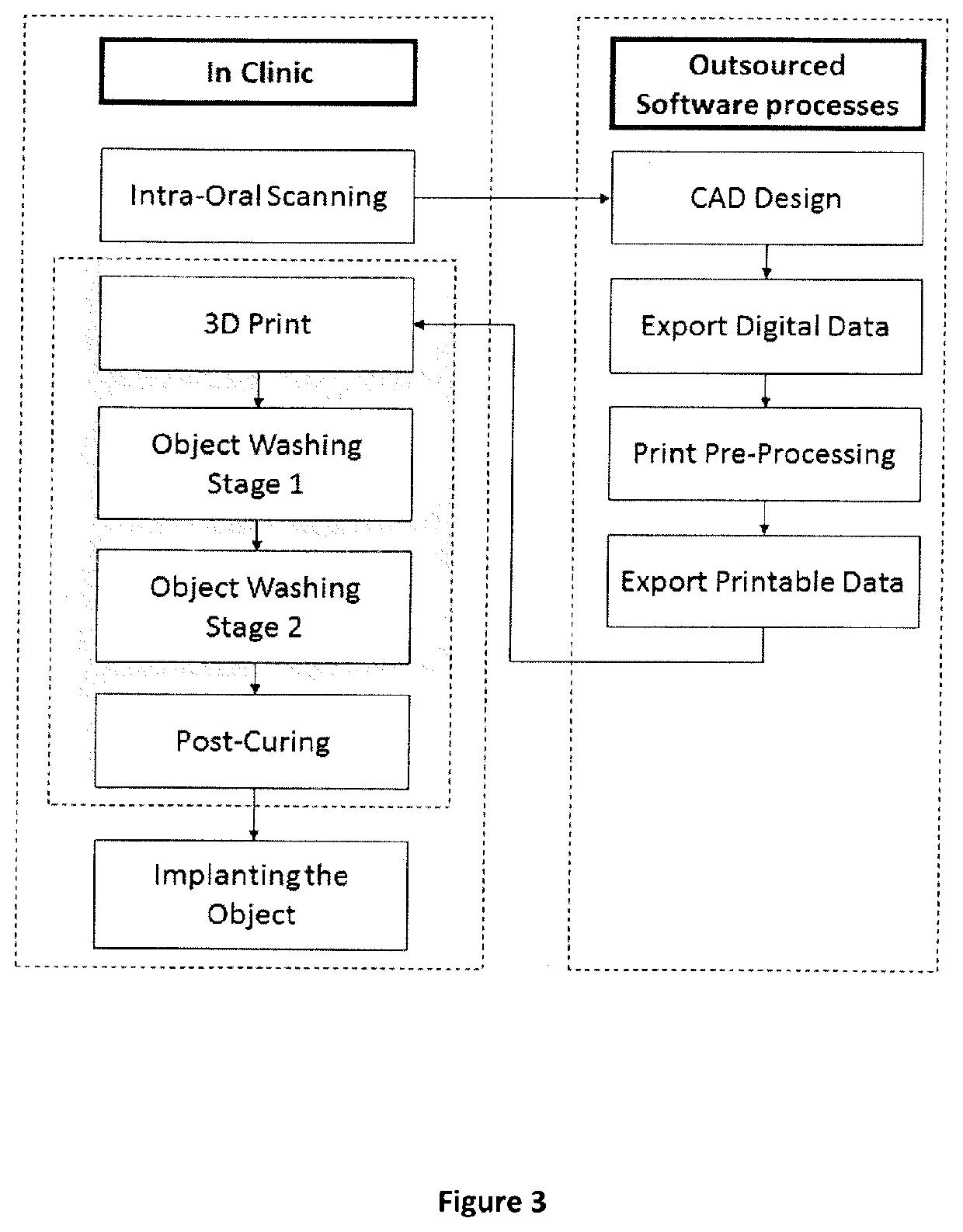Method and Device for Decentralised Automated Additive Manufacturing
a technology of additive manufacturing and decentralization, applied in the direction of manufacturing tools, cleaning using liquids, impression caps, etc., can solve the problems of requiring (a requiring (b) expensive and complicated software programs, and requiring (c) multiple consultations or visits. , to achieve the effect of fast turnaround times
- Summary
- Abstract
- Description
- Claims
- Application Information
AI Technical Summary
Benefits of technology
Problems solved by technology
Method used
Image
Examples
Embodiment Construction
[0029]Referring to FIG. 3, the invention comprises firstly capturing the patient's anatomy in the same way a clinician would normally do in the dental clinic, either by means of an intra-oral scanning or by creating a physical impression which may also be 3D scanned. Subsequently, the 3D data is sent out to an external facility, data / information support service, web portal, an area network (local or otherwise) or a cloud-based service, thus enabling actual work to be carried out from anywhere in the world. The work may also be partially, completely automated or completely non-automated (i.e. operated by humans at the back-end which may be centralized in one or more locations, or distributed decentralized as well), so that the outsourced software processes such as, but not limited to, file fixing, support generation (automatic or manual), parts arrangement, slicing to printable file, CAD design, exportation of digital data, pre-processing printing or exportation of printable data may...
PUM
| Property | Measurement | Unit |
|---|---|---|
| degrees of freedom | aaaaa | aaaaa |
| degrees of freedom | aaaaa | aaaaa |
| transparent | aaaaa | aaaaa |
Abstract
Description
Claims
Application Information
 Login to View More
Login to View More - R&D
- Intellectual Property
- Life Sciences
- Materials
- Tech Scout
- Unparalleled Data Quality
- Higher Quality Content
- 60% Fewer Hallucinations
Browse by: Latest US Patents, China's latest patents, Technical Efficacy Thesaurus, Application Domain, Technology Topic, Popular Technical Reports.
© 2025 PatSnap. All rights reserved.Legal|Privacy policy|Modern Slavery Act Transparency Statement|Sitemap|About US| Contact US: help@patsnap.com



